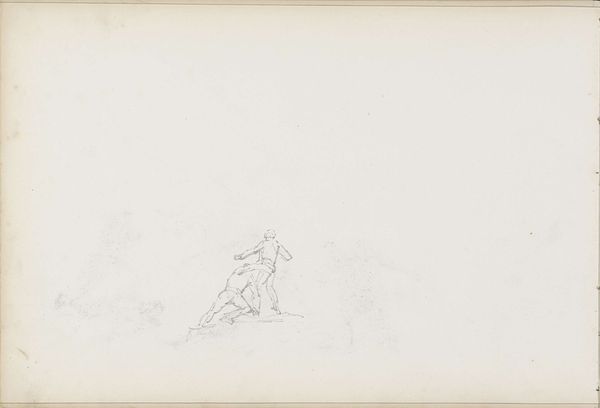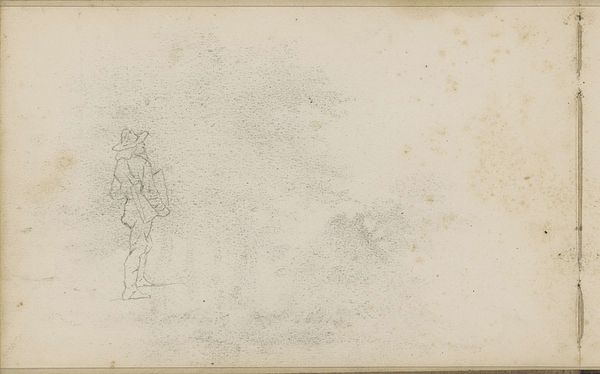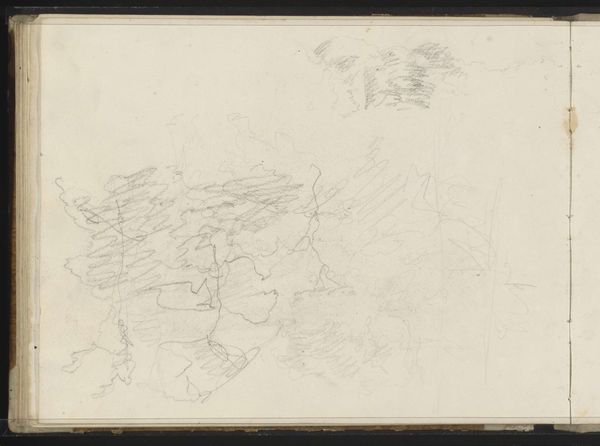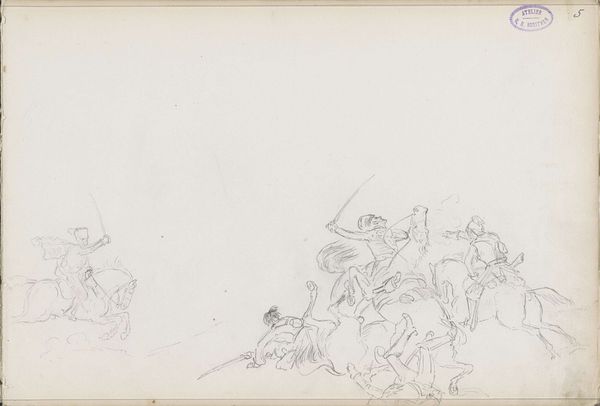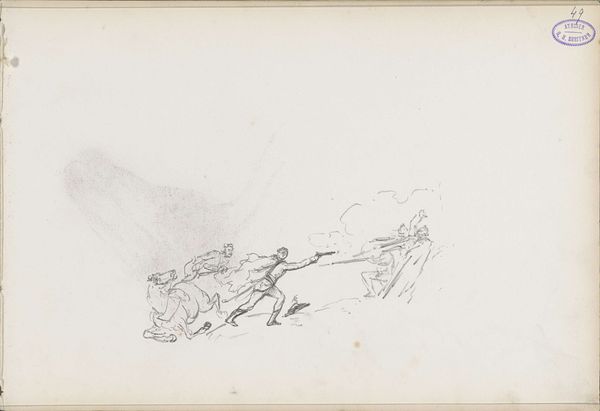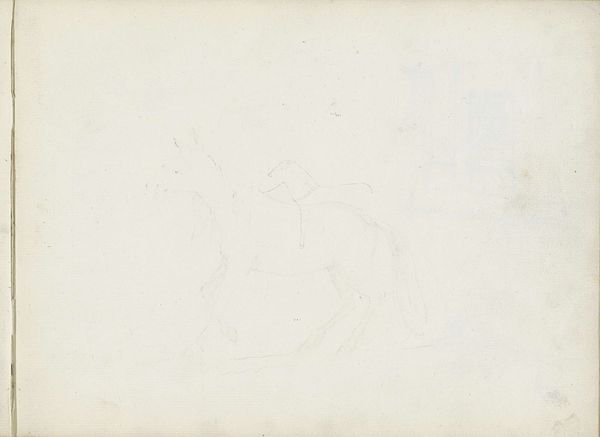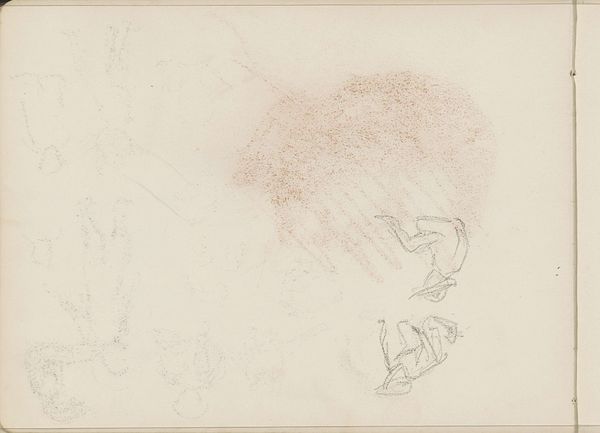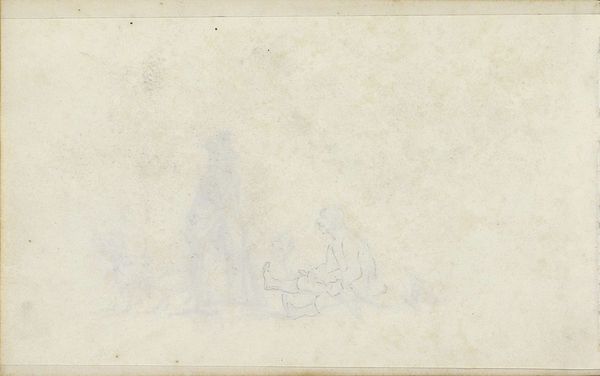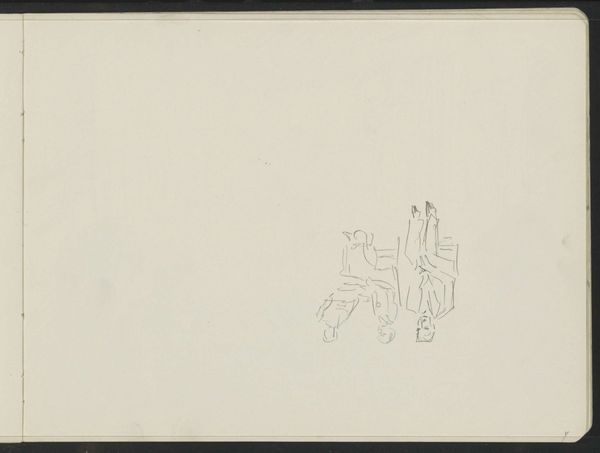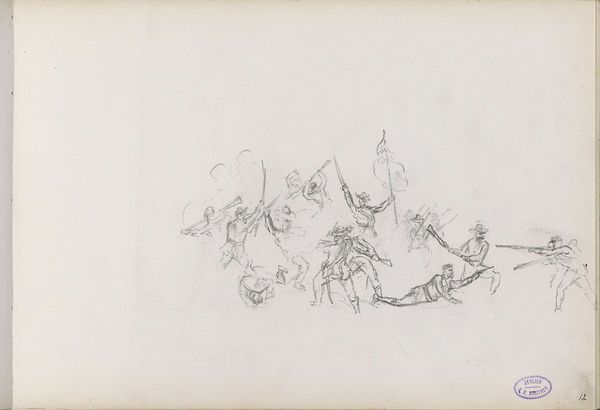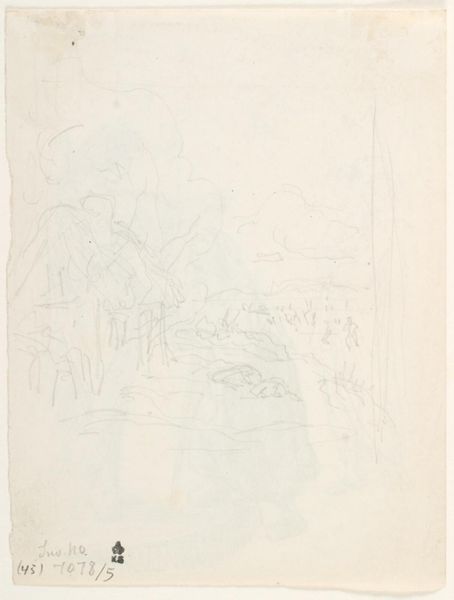
drawing, pencil
#
drawing
#
impressionism
#
pencil sketch
#
figuration
#
pencil
#
line
Copyright: Rijks Museum: Open Domain
Curator: Today we are looking at a work titled "Groep figuren", which translates to "Group of Figures," a drawing executed in pencil by George Hendrik Breitner sometime between 1872 and 1879. Editor: My first impression is a sense of ephemeral movement. The figures seem caught in transit, like a fleeting glimpse of urban life barely captured. Curator: That feeling is very much intended. Breitner, of course, became known for his street scenes. In the 1880s and 90s especially, he recorded the bustling life of Amsterdam. Editor: So even this early work gives us insight into the artist’s burgeoning interests. I find the open, unburdened nature of the sketch compelling—what’s suggested is as vital as what is defined. There’s also a subtle critique of the rapid transformations of modern society in the very act of capturing them so informally. Curator: He trained at the Hague Academy, and this work demonstrates the influence of the Hague School of artists. There is definitely a strong impressionistic element to the handling of the line and rendering of light here. One could see parallels in his work, for example, with some of Israels’ figure drawings of the period. Editor: And yet there is an inherent modernity that distinguishes Breitner. Beyond purely art historical schools, I feel like this drawing, perhaps unintentionally, anticipates a dialogue with photographers like Atget who documented similarly disappearing facets of society at a remove. How do we remember those on the margins, and what are our ethical obligations toward that act of representation? Curator: It’s a fascinating point, considering Breitner’s own eventual embrace of photography later in his career. Editor: Yes! Perhaps these sketches were also a form of early study for the snapshots that came later. Curator: Thinking about this, I’m more struck by the value of this early sketch and its value in understanding the breadth of the artist’s social context, if even he could not yet know where his trajectory would lead. Editor: Indeed. I now view this preliminary drawing as less of a prelude to, and more of a complex, evocative statement unto itself.
Comments
No comments
Be the first to comment and join the conversation on the ultimate creative platform.
